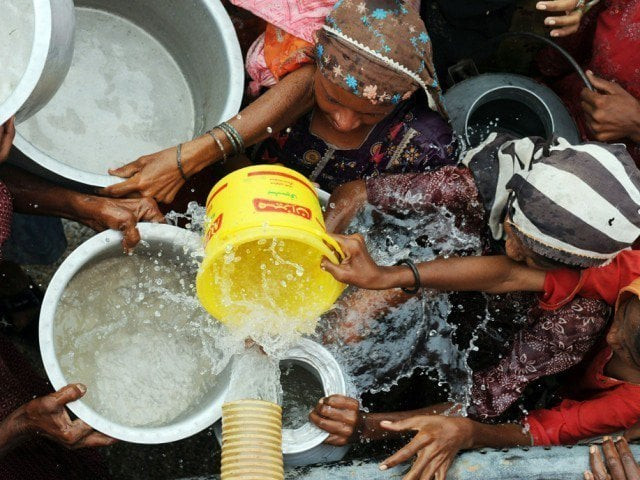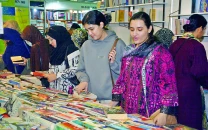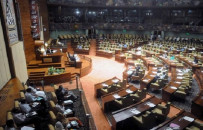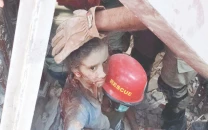Haleji Lake’s revival under way to improve Karachi’s water supply
In two years, reservoir will fetch 65MGD of additional water to Pipri pumping station

PHOTO: AFP
In order to improve the city’s water supply, the Sindh government has decided to revive one of the obsolete water reservoirs of the province - Haleji Lake in Thatta district.
The revival project includes the lake’s rehabilitation, including strengthening of its embankments and constructing an 18-kilometre new canal for water supply.
The feasibility report for the revival project, which is estimated to cost Rs6 billion, was approved in October 2015. The revival will take two years to complete and the entire cost will be paid for by the Sindh government.

“The revival of the lake will fetch 65 million gallons per day (MGD) of additional water supply from the abandoned water reservoir to Pipri and finally to the grid that supplies water to Karachi,” explained the project director, Sikander Ali Zardari.
Back to its roots
Haleji, an earth-filled artificial lake spread over six square-miles, was formed in 1940 during World War II, when the then British government of Sindh decided to increase the capacity of the lake by introducing a feeder canal from River Indus. Haleji Lake became the first water supply source for thousands of American and British troops stationed in Karachi.
The increased demand of water was fulfilled with the supply of 28MGD to Karachi through Pipri in 1942, the year it was commissioned.
Located 70 kilometres outside Karachi, Haleji Lake is also considered Asia’s largest bird sanctuary. Since it attracts thousands of migratory birds between November and February, it can be termed a paradise for bird lovers.
In 1994, the irrigation department cut off the lake’s feeding canal from its original source, Keenjhar Lake, when it built the Left Bank Outfall Drain (LBOD). The lake was reduced to a stagnant reservoir for saline water.
Need for revival
According to a Karachi Water and Sewerage Board (KWSB) official, the need to revive the disowned water source was never felt since the water board had enough water to fulfil the needs of the metropolis. However, over time, the need to revive one of KWSB’s oldest assets was felt given that the water board is failing to meet the city’s demand. Karachi needs 1,100MGD when it is only being supplied 550MGD.
Work begins
According to the project director, the ratio of total dissolved solvent in the water of Haleji Lake is very high due to salinity and stagnation. It is above the international standards and is not fit for human consumption, said Zardari.
“To bring the solvent back to the allowable limit, we have been washing the lake for the past six months,” he said, adding that this process includes maintaining the water inflow and outflow levels in the reservoir. “The washing will continue for a year until the infrastructural work is completed.”
For the love of birds
One of the reasons behind the revival is to sustain the migration of birds which has ceased due to saline water, said Zardari. Once sweet water is fed in the lake, it will attract more migratory birds to it since the birds seek fresh water, he said, adding that fresh water fish and crocodiles will also come to life again once the restoration is completed.

Zardari told The Express Tribune that the tender for consultancy will be issued in a newspaper in a week or two for the detailed designing of the project. “Though, this project is minor in terms of the amount of water that it will provide to Karachi, but at the same time it will revitalise the ecosystem in a short span of two years,” he added.
Published in The Express Tribune, March 7th, 2016.



















COMMENTS
Comments are moderated and generally will be posted if they are on-topic and not abusive.
For more information, please see our Comments FAQ